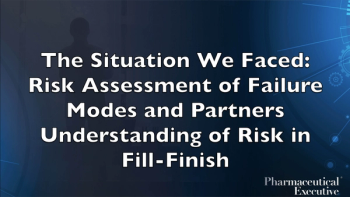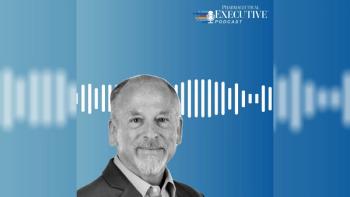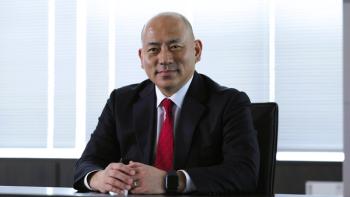
Ketamine-Like Compound Offers New Hope as a Potential Antidepressant and Non-opioid Painkiller
Shawn Singh, CEO of VistaGen Therapeutics’, discusses the company’s pipeline of new generation drug candidates for depression, neuropathic pain, Parkinson’s dyskinesia, social anxiety disorder, and suicidal ideation with potential for convenient, at-home use, rapid-onset therapeutic benefits, and exceptional safety.
Current treatment options for depression, pain, social anxiety, and other central nervous system (CNS) diseases and disorders often fall short of growing patient needs. VistaGen Therapeutics has an exciting CNS pipeline targeting multiple CNS conditions with high unmet need. Shawn Singh, VistaGen Therapeutics’ CEO, discusses the company’s pipeline of new generation drug candidates for depression, neuropathic pain, Parkinson’s dyskinesia, social anxiety disorder, and suicidal ideation with potential for convenient, at-home use, rapid-onset therapeutic benefits, and exceptional safety.
Moe Alsumidaie: The drug AV-101 is being applied to a variety of different disease indications. What is AV-101?
Shawn Singh: AV-101 is an oral NMDA receptor (or NMDAR) glycine site, antagonist. It is a prodrug that, mechanistically, is fundamentally different from all current first-line antidepressants and atypical antipsychotics used adjunctively with them. After oral administration, AV-101 crosses the blood-brain barrier through an amino acid transport system. Once it is in the brain, it is converted into its active form, 7-chlorokynurenic acid or 7-Cl-KYNA, at the glycine binding site on the NMDAR, a key neurotransmitter associated with new generation antidepressants such as IV ketamine and esketamine nasal spray. While IV ketamine and esketamine nasal spray block the ion channel of the NMDA receptor like a cork in a bottle at the glycine binding (or GlyB) site of the NMDA receptor, AV-101’s active metabolite, 7-Cl-KYNA, acts more like a thermostat; it inhibits NMDAR activity, but does not block its function completely. That inhibitory activity on the NMDAR is believed to trigger a cascade of events that stimulates or activates other excitatory neurotransmitters in the brain, AMPA receptors, which are associated with the synaptic activity necessary to achieve antidepressant effects. VistaGen recently received a Japanese patent for AV-101, for the treatment of depression and hyperalgesia.
MA: From a safety and efficacy standpoint, how is AV-101 different from other drugs, for example, ketamine?
SS: In published preclinical studies, AV-101 produced rapid-onset antidepressant effects comparable to ketamine, but without adverse side effects often seen with ketamine. Our CNS pipeline is focused on drug candidates with potential for at-home use, rapid-onset activity, and exceptional safety. IV ketamine's success for thousands of treatment-resistant depression patients has been life-changing. We believe esketamine nasal spray could be similarly game-changing for millions of Americans with Treatment resistant depression (TRD). The question now is, what is beyond ketamine and esketamine? Can a new drug maintain the antidepressant benefit on a long-term basis, without requiring administration and monitoring in a clinic-without psychological side effects or cardiac safety concerns associated with ketamine-based therapies? For depression, that is where we see our AV-101 and PH10 having the potential to come into play.
There isn't a “one size fits all” solution for depression; there is no magic antibiotic-like “one and done” solution for depression. So, we are rooting for patients to have as many options as possible, whether it’s IV ketamine, esketamine nasal spray, AV-101, or any other new generation medication in development-all of which should give hope to patients and their support systems.
MA: I see that there's much focus on MDD and you elaborated a lot on where those opportunities lie, for example, add-on therapies or a better way of administering the medication through a similar mechanism of action but different administration. Could you elaborate on how you were able to find that as a target for MDD?
SS: Ketamine, since the 1970s, has been FDA-approved and widely-used globally as an anesthetic at very high doses. For depression, it has been prescribed on an off-label basis (which is legal, but patients have to pay for it out of their own pockets-without reimbursement from insurance) for more than a decade. The out-of-pocket cost of ketamine therapy can be significant-at some centers upward of $6,000 for an initial course of treatment, and then patients have to maintain treatment so that they don't relapse.
Teams at Yale initially studied a very low dose of ketamine (about 1/10th the dose used for anesthesia) for depression in the early 2000s with remarkable success. A U.S. National Institute of Mental Health study in 2006 showed a 71% response rate in treatment-resistant patients within a day of a single low dose IV administration of ketamine. That body of work got the field thinking about how ketamine works and its mechanism of action as an NMDA receptor antagonist. Meanwhile, many years later, while we were on a development track pursuing neuropathic pain and conducting our Phase I safety studies, healthy volunteers on AV-101 (and none on placebo) reported feelings of well-being. Those reports made us think that maybe that was the kind of effect that had been seen in ketamine studies for depression. So, at the point of that very unexpected discovery about AV-101’s potential in depression, with our NMDA receptor glycine site antagonist, we pivoted, and that pivot led to the development track we are on today.
MA: AV-101 is also targeting neuropathic pain. How is this compared to existing painkillers like opioids?
SS: AV-101 is entirely different from current opioid receptor-focused painkillers. AV-101 does not bind to or involve opioid receptors. When you deal with neuropathic pain, usually following events involving an accident or surgical trauma, doctors often prescribe opioids, anticonvulsants, and antidepressants for pain. NMDAR antagonists have long since been known to be neuroprotective, which is why we initially started down the pain track. In published preclinical studies, AV-101 produced efficacy like gabapentin, an anticonvulsant often used for neuropathic pain, but without gabapentin’s sedative effects. We have received Fast Track designation from the FDA for development of AV-101 as a potential non-opioid treatment for neuropathic pain. There is an urgent need for new non-addictive, non-opioid, non-sedating, oral at-home treatment alternatives for neuropathic pain, and we believe that AV-101 has potential in that regard.
MA: You are also planning to target suicidal ideation with AV-101. Could you talk more about the study conducted with Veterans?
SS: We are not yet studying suicidal ideation in patients. That will be the next step in our plan. The first step is ongoing-a study with Baylor in healthy volunteer military Veterans to confirm that there is a target engagement of AV-101 at the NMDAR. The study at Baylor, which is being funded by the U.S. Department of Veterans Affairs (VA), is intended to lead to an exploratory Phase II-A study in U.S. military veterans battling suicidal ideation sometime next year. In an acute clinical setting, IV ketamine often can help someone with suicidal ideation or who have attempted suicide achieve a system reset. Again, however, the question is how do you maintain that reset benefit, both safely and consistently and on an outpatient basis? Oral AV-101 has been observed as safe in multiple clinical studies to date, two with patients and two with healthy volunteers. We should see that Baylor/VA study read out in the fourth quarter of this year.
MA: Can you describe the issues and the needs for social anxiety disorder? Why are you pursuing this market? Can you also briefly explain the mechanism of action for PH94B?
SS: Social anxiety disorder is a large, and we believe growing, CNS market and a significant unmet mental health concern in the U.S. and elsewhere. Twenty-two million Americans are wrestling with social anxiety disorder, or SAD. SAD involves an intense, persistent fear of judgment, humiliation, or rejection that arises in everyday social and performance-related situations. The three existing drugs approved by the FDA for SAD, all of which are current antidepressants, fall far short of patient needs. The other drugs prescribed for SAD on an off-label basis are benzodiazepines and beta-blockers, and each of those classes has very well-known side effects and safety concerns.
We are developing PH94B to be the first on-demand, as-needed treatment for SAD. It's a first-in-class CNS neurosteroid nasal spray that acts rapidly, without systemic exposure, at a microgram dose sprayed directly onto chemosensory neurons and receptors in the nasal septum. That activity triggers a stream of neural impulses that affect parts of the brain associated with suppressing fear and anxiety.
In Phase II studies and a pilot Phase III study, PH94B has been observed to work within about 10 minutes of convenient self-administration to relieve anxiety before feared social and performance situations. For CNS drugs, sometimes the side effects can be more troubling than the underlying conditions they aim to treat. With PH94B, we believe there is no potential for addiction or sedation, and again, at microgram doses, there is no systemic exposure. We are preparing to advance our PH94B program into pivotal Phase III development in about a year.
Overall, we have three late-stage CNS product candidates that are either in or through Phase II development and headed towards multiple large CNS markets, all of which have drugs today that fall far short of what patients need, because of efficacy, safety or both. We are now setting in motion what we hope will be a stream of clinical and regulatory milestones we expect will deliver game-changing therapeutic benefits to millions of patients and comparable value to our stockholders.
Moe Alsumidaie, MBA, MSF is Chief Data Scientist at Annex Clinical.
Newsletter
Lead with insight with the Pharmaceutical Executive newsletter, featuring strategic analysis, leadership trends, and market intelligence for biopharma decision-makers.




